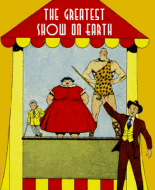Someone, maybe more than one, commented about not being able to see the artist's ability because of the stick figures, and while you can't see how talented an artist is just from stick figures, I would point out just how easy it is to screw up a stick figure. Their apparent simplicity leaves no room to hide art mistakes.
this is a common misconception about art, what looks simple is in fact not so.
For example. 'Peanuts' looks deceptively simple, but Schulz manages to depict recognizable characters and behavior patterns within that visual framework.
Charles Schulz was a genius in making the slightest changes in the configuration of the eyes and mouth to indicate differences in mood and expressing emotions. I, myself, have also spent hundreds of hours practising that skill. Carl Barks and all the better artists needed to be good at that. You've probably noticed how critical I am of artwork I don't like. Artists' lack of those skills plays a big part in that.
One of my pet peeves is cartoon figures doing things or saying things that don't match the expressions on their faces or body language. One might then ask "Then how does an artist portray a dishonest person lying or trying to mislead someone? The answer is that there are innate telltale physical signs and expressions common to all humans (except, perhaps, some pathological liars) which are manifest in such situations.



